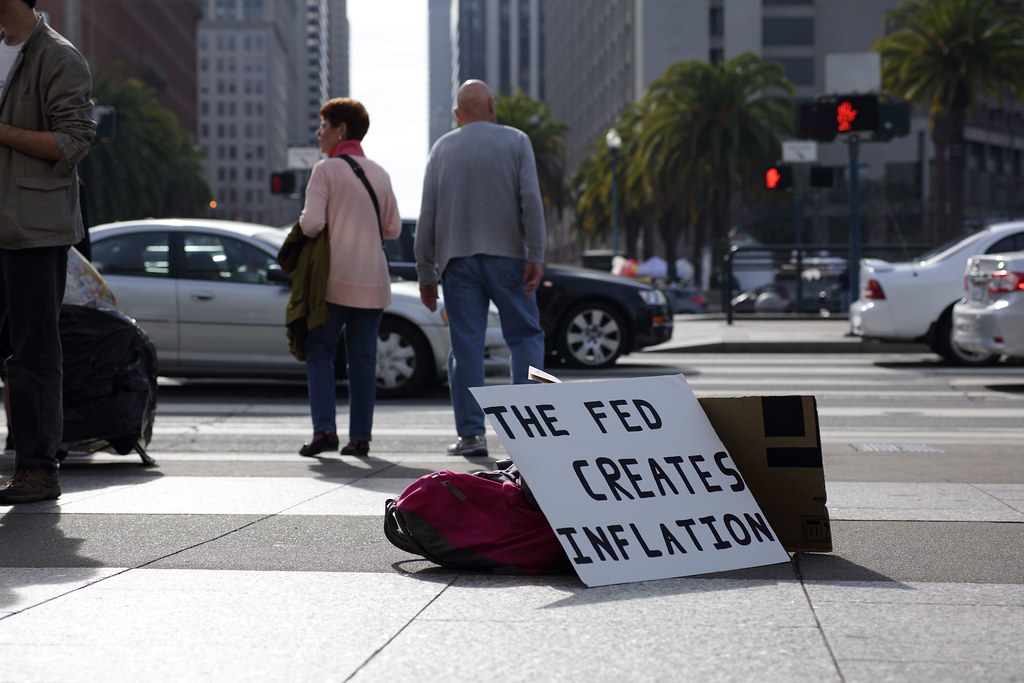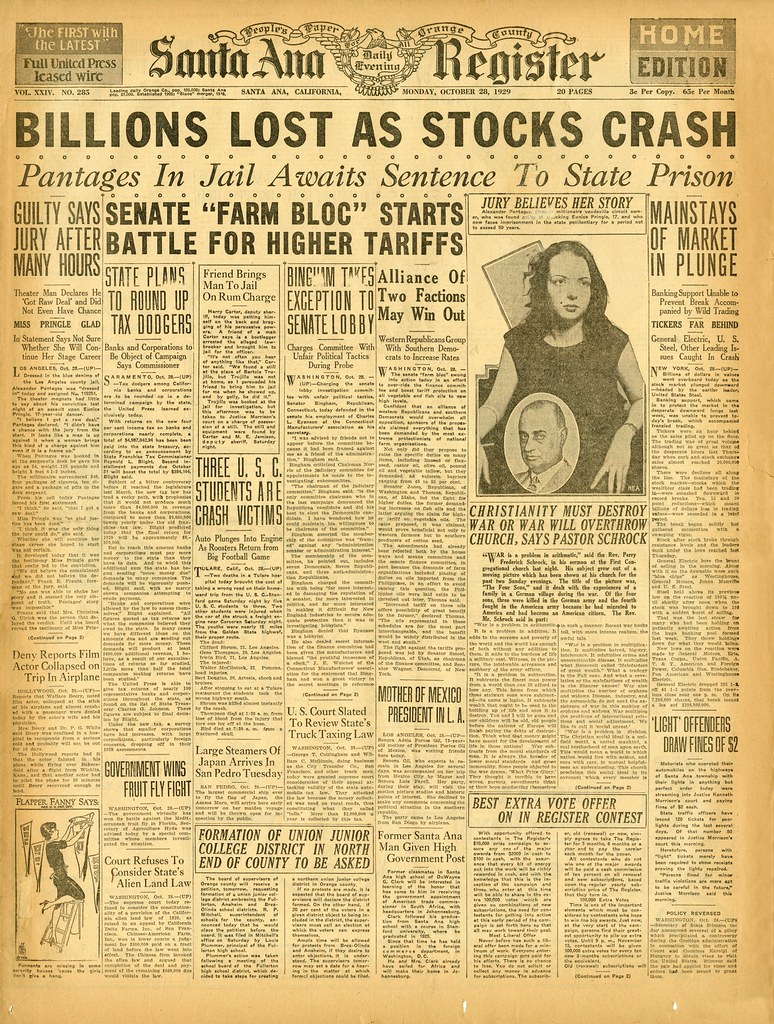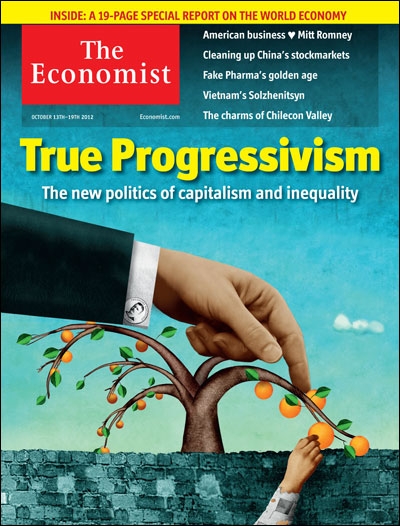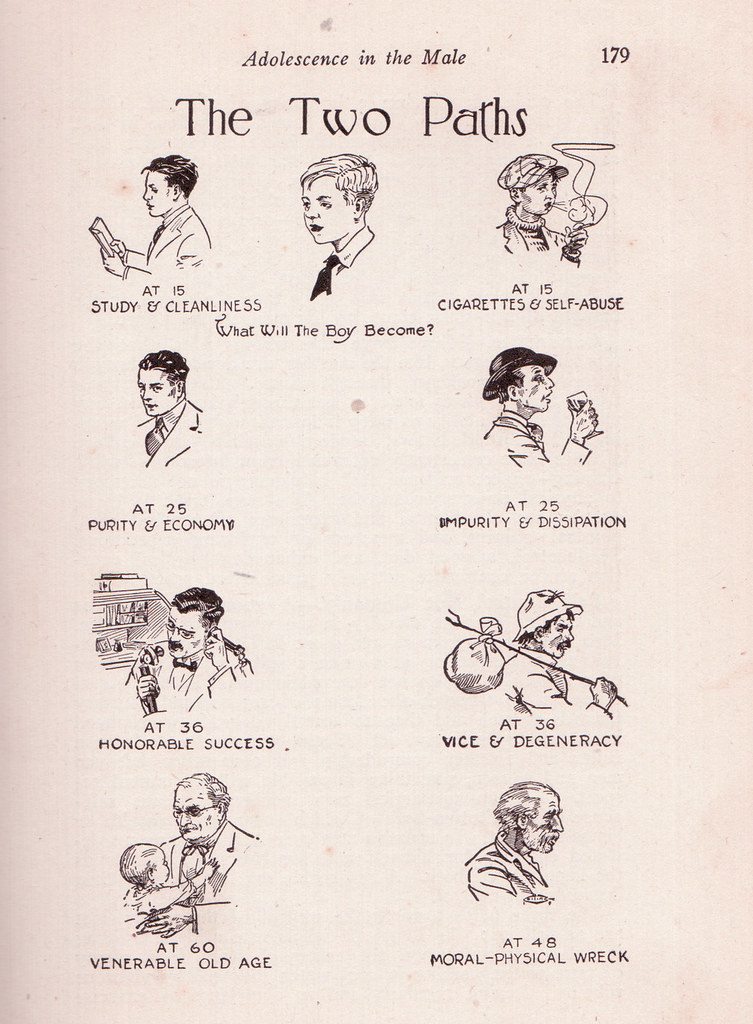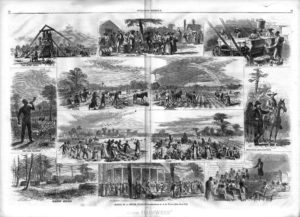Conservatism as defined post-1970 typically rests upon the ideological origins of the likes of Edmund Burke, The Roman Republic and a variety of other historical influences that culminate in the mid-to-late twentieth century. The vast majority of historical interpretations of what we now call conservatism pre-1970 were overwhelmingly put forth by progressive historians usually in an attempt to paint the movement as corporatists, anti-labor, and even anti-change. Of course, these historians, such as Charles Beard, were attempting to solidify and justify the progressivism of the day and for good reason, as a very thorough and organized anti-progressivism movement was on the rise. The ideological and political tussle between contemporary conservatism and progressivism has endured for well over a century, yet the roots of this conflict are normally pinned to the sweeping changes that took place in American political structures, cultural battles, and academic alignments of the 1960s forward. Neo-conservative graduate students in the 1970s would lay claim to this wavelength and begin a quasi-conservative movement giving historical credence and an interpretative value of conservatism that appeared fresh or new and created by this band of neo-conservatives that politically and ideologically moved forward towards the 1980s onward. While it is true that modern day conservatism saw new alignments and political and cultural battles during this period, it is also true that this fight between left and right had been raging since the beginning of the progressive era, possibly earlier.
As Reconstruction continued to rebuild a mentally and physically torn nation, political violence and radicalism began to fester and grow in the United States. Marxism began to usurp bitter clingers of the slavery era, many converting and producing anarchists, white nationalist socialism, and even nationwide socialist communes. During this same period a number of academics, mostly children of disgruntled, prominent Protestant families, were returning from Germany looking to import the ideals of German socialism, what we now know as progressivism. Men such as Richard T. Ely, Walter Rauschenbusch, and a host of others, would bring this German Marxism across the pond and quite literally take over the academic and religious spheres in America. The political economy, state-run economics, the social gospel, Darwinism, eugenics, and the administration state would all originate from these new ideologues under the auspice of “progress.” This portion of the historiography has been well documented and discussed, and historical consensus, in general, agrees that these new beliefs in progress were well instilled by 1880. Indeed, nearly every university, especially the ivy league schools and prominent research universities by 1900 had nearly all began promoting progressivism and with the election of Woodrow Wilson, an Ely student, the nation had arrived and shifted toward modernism. This rebirth brought about vast governmental controls, eugenics, scientism, social Darwinism, state funded racism, and a massive redistribution of wealth. While progressive and social historians claim this as a victory of justice, equality, and the fulfillment of constitutional prophecy, not all Americans were in favor of this newfound radicalism.
To truly understand the history of contemporary conservatism in America, it is necessary to look past both the arguments that make up the historiography. While both hold truths and historical facts, both the left and right academic paradigms have tended to miss the mark. To see the beginnings of the political, ideological, and cultural wars between conservatism and progressivism, it is necessary to look where few historians have ventured, the republican schisms of the early twentieth century. Furthermore, this split between progressives and anti-progressives within the Republican party began in the late nineteenth century, coming to full fruition between 1900 and 1920, all of which began with the California Republican Party of the period. At the time, these anti-progressive Republicans were called “the regulars.” The Regulars had been contending with progressives who had moved into the California Republican Party, led by Hiram Johnson and his comrades. Johnson was closely affiliated with Theodore Roosevelt, a progressive, and were attempting to upend the Regulars through what can only be described as a hostile takeover. California by the time of the contentious election of 1912 had become one of the most populist states, holding a large number of delegates and a progressive academic and political headquarters. This schism of the Republican Party in California would have national implications, as the split between progressives and the Regulars in California, initiated by Johnson and Roosevelt, would metastasize across the nation, split the Republican vote nationally and hand the White House to Democrat Progressives and Woodrow Wilson. Indeed, the shenanigans of the 1912 elections can quite possibly be interpreted as the creation of the administrative state, the income tax, state-run economics, and even Jim Crow laws, all of which were promulgated by progressives in power. Who were the individuals that contended that this idea of progress was unconstitutional, anathema to American liberties, and illiberal?
Many historians have spoken of Reaganism, libertarianism, ancient Greece, and Rome or even the Founding Fathers as the roots of modern-day conservatism. Very few have discussed individuals that first endured and contested progress as a guise for Marxism. This is where this research comes into play, by looking at these Californian Republicans of the early twentieth century, dubbed “The Regulars.” Regulars like Joseph R. Knowland, Ralph Arnold, Judge Walter Bordwell, Senator William Knowland, all Californian Republicans, all became anti-progressives, and all would influence and help organize a conservative movement and ideology that is still the standard conservative platform today. In revealing these characters, their influence and struggles, this study will trace a line between four men, Joseph R. Knowland, Ralph Arnold, William Knowland, and their nemesis Hiram Johnson. Doing so from a political and ideological framework, the research will lean upon primary source materials from archive collections at Berkeley, the Huntington Library, digital archived materials from books to news articles and secondary source materials on the subject. As a history major beginning as an honor student during undergraduate studies with a capstone on the Hebraic roots of America’s founding, holding a 4.0 GPA through both a Master’s degree in history and thus far in the Ph.D. program towards completion of this dissertation, and a graduate thesis written upon the Rise of Conservatism in the West, with various academic journal articles pending publication, this is a topic that is well-suited to this historians expertise. The effort will suggest that modern day conservatism can be traced to California in the late nineteenth and early twentieth century, showing an organized and ideologically orchestrated conservatism that would become the catalyst for later thinkers, politicians, and academics. In sum, the research will place a much-needed focus upon the conservatism of the Progressive Era, hopefully showing the beginnings of a new type of conservatism that produced the likes of Ronald Reagan and Barry Goldwater and the fight against progressivism.
Ron Cook
Summary
The ability to incur the front end, investment risk that is a necessary component of not only entrepreneurship, but capitalism in general, requires endurance, patience and a societal framework that is contingent with free market ideals. As revealed during the preceding interview, the state and the free market do not always align. Regulation, taxes, fees and nearly all state intervention into the market is a known and empirically proven loss, in profitability, happiness and wealth creation. Indeed, looking back over the twentieth century American economy, political and social structures, the state directed economy is a sum negative. Unrealistic discount rates, inflationary fiat currency and corruption thrive under a state directed economy, creating more than simple financial poverty. The lack of private property, private ownership, and the lack of resource availability directly stifles ambition, deflates confidence, leads to emotional instability and a general feeling of hopelessness. It is not a secret that most socialistic states require an agnostic or atheistic populace, as faith in God reaffirms the tenets of free market capitalism. Mr. Walker throughout this interview exposes what most entrepreneurs and business owners learn while operating a business, which is that government intervention into the market is the antithesis of free enterprise. Whether it is micromanaging markets through licensing, environmental agencies or government oversight agencies or excessive taxes and fees or compulsory shutdowns, this intervention skews the business cycle, wipes out profits and creates an equally dismal economic scenario for all involved. These factors explain the failures of The New Deal, The Great Society and the contemporary technocratic economy, that have done little more than consolidate power, impoverish the citizenry and destroy wealth generation. All of which shows the inverse of the proposed utopian ideals, that has instead created a fascistic system that some of the most notorious tyrants could have only dreamed of. If this path of a state directed economy continues in the United States, the logical and historical destination of authoritarianism, mass poverty and societal breakdown awaits. As Mr. Walker points out, the current and the former administrations reveal this dichotomy in full color and the choice of leadership and institutional reform may be the only recourse towards reviving the free market. I would only add that this begins with the base moral structure of the nation and reforming the education system is vital in teaching future generations the importance of free market capitalism.
The Great Depression: Problem, Reaction, Solution
While it is common to blame the Great Depression on greedy capitalists, the unpredictability of the free market, the gold standard and even consumers, none of these explanations hold up to empirical analysis, nor to basic economic science. The connection that binds these naysayers is threefold: statism, ignorance of economic theory or practice, and a general lean towards socialism. Whether it was the early national socialism of progressives like Richard T. Ely, the intellectually dishonest theory of John Maynard Keynes or the plethora or screeching Marxists during the late nineteenth century through the mid twentieth century, all of these ideals can be seen as creating and prolonging the Great Depression, as opposed to the contemporary rantings of these individuals and their theories as economic messiah’s that saved us from ourselves.
The Great Depression did not begin with 1929 stock market crash, but much earlier. Most classical economists point to various indicators of the Roaring 20’s as the catalyst for the Great Depression. Indeed, the four phases of causality offered by Friedman that begin with the massive economic boom of the 1920s, which he empirically shows was created by easy money and credit expansion via the Federal Reserve System. The massive printing of money, without hard asset support, in tandem with exquisitely low interest rates between 1924 and 1929, not only created an unsustainable economic bubble, but positioned the federal government and financiers towards enormous property grabs, further control over the means of production and leverage over the debt finance participants. In fact, the Reserve banks in less than a year, during 1924 “created” over $500 million in new credit, leading to a bank credit expansion of over $4 billion, which would become insolvent by 1929 and beyond. President Hoover had laid the groundwork for this statist economic model of expenditures, inflation and centralization.[1] FDR would follow it with his “New Deal” with a final blow to the free market through the Wagner Act.[2] The glaring question then becomes, how were these statist progressives, finance capitalists and crony capitalists able to create such swift and enduring policies and entities to obstruct and pervert America’s free market economy? Looking to the preceding movements by earlier progressive economists reveals the answer.
Richard T. Ely, the founder of progressivism and the conductor of the socialist symphony of the late nineteenth and early twentieth century would build the foundation upon which later comrades would be able to expand upon. Between 1880 and 1900, Ely and his merry band of political economists came to dominate the universities, foundations and government and one of Ely’s former students would make his way to the White House, Woodrow Wilson. The goals of these progressive economists of the early Progressive Era economists were nothing less than a form of national socialism. As Ely puts it, progressives are altogether dissatisfied with the condition of society and share a common ground as political and economic reformers of bringing about socialist changes through a steady and prolonged radicalism.[3] In Ely’s view the political economy conjured up by Marx and Engel was a natural evolution from the free market of capitalism to one of state control through progressive experts. In a desire to correct the supposed failings of free market capitalism, Ely ventured to perfect these inadequacies through state administration and trained experts through a purportedly new form of collectivization. His denotation of classical liberalism and free market capitalism as the “old way” and the progressive statism as the “new way” of political economy is revealing.[4] Woodrow Wilson and Herbert Hoover institutionalized Ely’s ideals, at a national level, bringing together finance capitalists, Big Business and government management of the economy, and the stage was set for the Great Depression, which inevitably transferred the money supply to the Federal Reserve, consolidated political power and created a state directed economy that would be furthered by FDR and the New Deal. Ely and his national socialists would pave the way for the Keynesian movement. While Ely blamed capitalism in general for the supposed woes of the world, John Maynard Keynes would go further and blame the individual consumer, and both believed only the government could save us from ourselves.
John Maynard Keynes and his “general theory” of economics became the dominant economic model most of the mid to late twentieth century. Much like Ely, Keynes was no friend of free market capitalism. According to Keynes the Great Depression was caused by the “animal spirits” of capitalists who refused to invest or spend, triggered the consumer pessimism that led to a lack of consumer consumption. Of course, according to the wisdom of Keynes, much like Ely, the only solution to this was government spending to offset the lack consumer consumption and private investment. He believed the best way forward was not necessarily more taxation, but monetary policy or in other words control of the money supply. This was accomplished through the Federal Reserve during the 1920’s money printing extravaganza and cheap credit, which simply inflated the money, drove prices artificially high and leveraged debt, that eventually brought the economy to its knees, allowing the federal government and financiers to move into the spotlight as the only means of salvation for the nation. This academic and economic myth, that capitalism was the cause of the Great Depression and only through government intervention was economic recovery found, continues today, without recourse nor justification.[5] Milton Friedman points out that this was not only a created crisis, but that the Federal Reserve first pumped liquidity into the money supply, but then stood down refusing carry out its assigned role of providing liquidity through cheap loans between 1929 and 1933, in essence watching the ship sink.[6] As early as 1934 this catastrophe was labeled as a “deliberate co-operation between Central bankers, deliberate ‘reflation’ on the part of the Federal Reserve authorities, which produced the worst phase of this stupendous fluctuation…which was responsible for the excesses of the American disaster.”[7]
[1] Murray N. Rothbard, America’s Great Depression, Auburn: Mises Institute, 1963: 285-336.
[2] Foundation for Economic Education, What Caused the Great Depression?, February 02, 2018, https://fee.org/articles/what-caused-the-great-depression/ (accessed July 29, 2021).
[3] Richard T. Ely, French and German Socialism in Modern Times, New York: Harper &
Brothers, 1883: 1-2.
[4] Richard T. Ely, “The Past and Present of Political Economy,” Edited by Herbert B. Adams, John Hopkins University Studies in Historical and Political Science (John Hopkins University) II, no. 3 (1884): 64.
[5] Lawrence Reed, Great Myths of the Great Depression, Mackinac Center for Public Policy, 2016: 1. https://fee.org/resources/great-myths-of-the-great-depression/.
[6] Ivan Pongracic Jr., “The Great Depression According to Milton Friedman,” Foundation for Economic Freedom, (September 1, 2007), https://fee.org/articles/the-great-depression-according-to-milton-friedman/.
[7] Lionel Robbins, The Great Depression, Freeport. New York: Books for Libraries Press, 1934, 54. https://cdn.mises.org/The%20Great%20Depression_2.pdf.
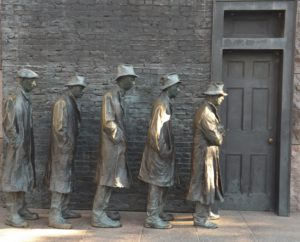
“Progressives are altogether dissatisfied with the condition of society and share a common ground as political and economic reformers of bringing about socialist changes through a steady and prolonged radicalism.” – Richard T. Ely
“Banks have done more injury to the religion, morality, tranquility, prosperity, and even wealth of the nation than they can have done or ever will do good.” – John Adams
“By a continuing process of inflation, government can confiscate, secretly and unobserved, an important part of the wealth of their citizens.”
– John Maynard Keynes
“There is one good thing about Marx: he was not a Keynesian.” – Murray Rothbard
Experts, Economics and Errors
Postbellum America could be described as the rise of Progressivism, which was a political economic modality very similar to national socialism. Richard T. Ely was the driving force behind the rise and success of the political economy of progressivism. The academic shift in postbellum America is staggering. This academic shift influenced the political shift in economic thinking, which drove the popular or societal shift in economic ideology. This ideological and academic shift between 1865 and 1900 imbedded a once foreign ideology, the state directed economy, into the American psyche, government and institutions.
By 1900 Ely and his cohorts had solidified themselves as the prophets of the “new economy.” Reigning from Wisconsin, with tentacles into every major university including Stanford, Yale, Brown and Johns Hopkins, Ely and his students had brought the ideals of the state directed political economy to the forefront of American life. With progressives at the helm of government, Ely and his views would be implemented into public education, the Treasury Department, the Federal Trade Commission and Ely himself had a direct channel to President Theodore Roosevelt, who held Ely in high esteem. Other adherents to Ely’s theories and mission included his former students Woodrow Wilson and Frederic C. Howe, Supreme Court Justice Oliver Wendell Holmes, Jr.
Though successful as a theorist and organizer, for an economist, Ely rarely saw profits from his personal business ventures. While having one of the most successful and lucrative publishing deals for his economic textbooks being used in public education across the nation by 1920, Ely struggled with debt, attempted a real estate venture and various personal investments that in his lifetime never amounted to more than $50,000. Eventually, Ely resorted to selling his labor library collection of writings to John Crerar Library in Chicago for a net price of $12,500. Indeed, nearly all of Ely’s capital for his projects came from wealthy friends and small investors. However, the influence of these projects is staggering as Ely would create and direct organizations that would quite literally change public opinion, guide the state and federal government on economic policy and become the standard of academic offerings on economics. Among these projects were Ely’s, American Economic Association, the precursor to the American Association of University Professors, the National Civic Foundation, the American Bureau of Industrial Research and the American Association for Labor Legislation, nearly all formed between 1900 and 1920.
Richard T. Ely, while not terribly successful in obtaining profits from the free market, of which he disdained, Ely was enormously profitable from donations by wealthy idealogues, and government sponsored projects and positions. In Wisconsin, with progressives in charge of the state and the federal government, Wisconsin University saw a jump in income from around $600,000 in 1903 to over three million by the end of 1914. Ely would cash in on this monetarily and academically, as he convinced the university president to give him a $4,000 salary with one paid semester of each academic year for research, which gave him the best economic professorship in the nation. By 1911, Ely’s department at Wisconsin had six full time professors, which was the most in the country. Ely’s textbook Outlines, now being used in high schools and universities in over 250 locations by the 1920s, had by 1937 sold nearly a million copies, second only in economic works to Adam Smith’s, Wealth of Nations. The royalties from his textbook, which was compulsory, netted Ely an average of $7,000 per year.
The reach and influence of Richard T. Ely is nearly unfathomable between 1900 and 1920. By 1911, Ely in tandem with the Wisconsin State Governor Francis McGovern had created a nationalistic socialist state that shaped and influenced federal decisions and policies, through their web of supposed experts, with forty-six members serving both the state and the university. Wisconsin, with the help of Ely’s students John Commons and Thomas S. Adams, drafted the first progressive income tax in U.S. history, which became the template for the federal income tax law of 1913. Ely would also spearhead his progressive socialism, with a nationalism he learned during his formative years studying in Germany. Embracing and helping to implement events such as restrictions on Japanese immigration, which would be a precursor to the progressive internment camps later, Ely was unabashedly imperial and nationalistic. Ely supported the United States annexation of the Philippines and encouraged compulsory military service, disavowed Wilson’s League of Nations, and in 1914 stated that any professor that spoke against America’s involvement in World War I, should be “fired, if not shot.”
Richard T. Ely, considered the founder of progressivism, was not only highly successful in bringing his version of national socialism to American shores, but pivotal in creating the necessary structure and establishment to convert America into a welfare state. This state directed economy, from which Ely profited greatly, would be the foundation upon which The New Deal, Keynesianism, The Great Society, Universal Health Care and a multiplicity of other socialistic programs, laws and academics would build on. While it is common for contemporary progressives to deny that they support imperialism, national socialism and autocracy, the founder of progressivism, Richard T. Ely and the entire history of progressivism, throughout the twentieth century shows that these anti-free market and authoritarian ideals are the very legs upon which they stand.
Sources
- Ely, Richard T. French and German Socialism in Modern Times. New York: Harper & Brothers, 1883. https://archive.org/details/frenchgermansoci00elyr/page/n7/mode/2up
- Ely, Richard T. “The Past and Present of Political Economy.” Edited by Herbert B. Adams. John Hopkins University Studies in Historical and Political Science (John Hopkins University) II, no. 3 (1884): 64. https://archive.org/details/politicaleconomy00elyrrich/page/n5/mode/2up.
- Leonard, Thomas C. Illiberal Reformers: Race, Eugenics and American Economics in the Progressive Era. Princeton: Princeton University Press, 2016: 109-28. https://www.jstor.org/stable/j.ctvc77cqn.11.
- Rader, Benjamin G. The Academic Mind and Reform: The Influence of Richard T. Ely in American Life. Lexington: The University Press of Kentucky, 2015. muse.jhu.edu/book/37613.
- Wisconsin Historical Society. Richard Theodore Ely, 1854-1943. 2020. https://www.wisconsinhistory.org/Records/Article/CS1614 (accessed September 26, 2020).
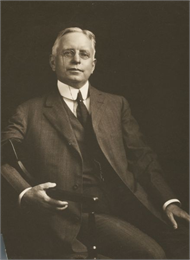
“All the plans of reformers, described in this work, were meant to be executed and to inaugurate a new era in the development of humanity.”
Richard T. Ely House in Madison, WI.
Postbellum America would become a new nation and in short order become the predominant global economy. Just as the fight over constitutionalism, slavery and expansion began to brew in the early to mid-nineteenth century, a tandem event took place, namely the American industrial revolution. Economically speaking, few if any commodities defined American exports, production or manufacturing like cotton. After manufacturing pioneer Eli Whitney created and patented the cotton gin, which was a machine that removed seeds from cotton fiber, the American economy uniquely positioned to capitalize on the industry, exploded onto the world scene.
Normally, in the continuum of classical economics, this should have created not only an enormous export economy towards textiles, but a springboard of economic wealth distribution for the young nation. This would not be the case upon the latter, as slavery was the primary driver in the farming of cotton in the United States, at the time, which would enrich a handful of planters in the South and elite manufacturers in the North and impoverish thousands of yeoman farming families in the process. In turn this created a working underclass in the North and a vast subsistence farming class in the South.
As tensions and tempers flared, a civil war drew nigh and in 1860 many Southern states would succeed from the Union, which spawned a bloody and grueling war between countrymen, women and children. The end of legal slavery would be the outcome of the war, with a South that was razed to the ground and forced to comply with the outcome. In this sense, especially with the outlawing of free labor and chattel slavery, combined with massive crop destruction, it would seem logical that the American cotton industry would fade away with the Confederacy. This did not happen; indeed, the inverse took place, and the cotton industry was about to not only remain a primary powerhouse for the American economy, but would soar to new heights, with slavery and free labor in the rearview.
The numbers do not lie, as classical economists were quickly proven correct that slavery was not only immoral, but an economic failure. After 1865 cotton was produced through wage labor by sharecroppers, small farmers and plantation owners, both black and white. By 1870 the South had produced more cotton in 1860 and by 1880 cotton exports were higher than in 1860. Cotton production in the state of Georgia alone increased by over 47% between 1860 and 1880, which is a strong indicator as to the economic faltering of the institution of slavery. More Southern farmers switched to cotton production after emancipation, displacing food production of crops such as grain and corn, which shifted to the mid-Western states. Specialization now relied upon ingenuity, technology and sound investing, rather than family states and slave labor. This again revealed the power of free enterprise, as cotton production and sales soared during and after Reconstruction.
Another sector of the country would now take its seat at the table, as the West was now more than “free soil” territories, but now becoming Unionized states without slavery all together. The same railroads that revolutionized the nation North to South, connected the Pacific Coast to the Atlantic Coast, which was a further boost for the cotton industry after about 1870 onward. Regardless of pests, storms, speculation or political and social fights, cotton continued to be a leading economic driver for the United States. Harper’s Weekly reports in an 1878 financial outlook that “the Agricultural Bureau and on the New York and New Orleans exchanges the cotton crop is estimated to as being more likely to exceed than to fall short of four million bales.” King Cotton was no longer a euphemistic tool of the Confederate South, but a legitimate quasi free enterprise that would quite literally pull the country out of ruin and debt, holding the foreground in exports and profits making the United States the global leader in cotton until 1937.
As the nation expanded Westward, cotton came along. The hot and dry climate, matched with the harder soil should have left King Cotton East of the Mississippi River, yet ingenuity, a little luck combined with massive irrigation and federal subsidies, cotton would soar even higher in price, exports and wealth creation. By 1920 cotton became an enormous agribusiness in the West, with ex-Georgians like J.G. Boswell at the helm in the Central Valley of California. In 1960 the Boswell family became the largest single farmer in the nation owning millions of acres, almost solely producing cotton, in an arid semi-desert region, incurring some of the largest irrigation projects ever recorded.
Cotton production and manufacturing were with Americans in the early days and turned large profits, yet this came at the hands of enslaved humans and did not enrich the nation collectively, nor did it enhance the soul of a proclaimed constitutional republic. Every step of the way, the voices of the abolitionists and the classical economists could be heard denouncing the institution of slavery in America but were not immediately heeded. Once slavery was ended, the American economy rocketed almost overnight, growing exponentially for over a century, and cotton played a significant role in total economic growth and gross domestic product. Unfortunately, finance capitalism would become instituted in the twentieth century incurring inflation, market crashes and unfathomable indebtedness and if one listens closely, you can still hear the abolitionists and classical economists pleading with the nation.
Sources
- Arax, Mark. The King of California: J.G. Boswell and the Making of a Secret American Empire. New York: Public Affairs, 2003.
- Dattel, Eugene R. “Cotton and the Civil War.” Mississippi History Now. July 2008. http://mshistorynow.mdah.state.ms.us/articles/291/cotton-and-the-civil-war (accessed July 6, 2021).
- Harper’s Weekly. “Harp Week: Explore History.” Agricultural machinery and equipment. December 18, 1869. https://app-harpweek-com.ezproxy.liberty.edu/ViewIndexEntryLightbox.asp?SubEntryClass=Illustration&SubEntryKey=032622&MainEntryKey=000336 (accessed July 6, 2021).
- Harper’s Weekly. “Harp Week: Explore History.” American South, business and economy. September 27, 1878. https://app-harpweek-com.ezproxy.liberty.edu/ViewIndexEntryImage.asp?subEntryClass=Combined&subEntryKey=685628&page=1&imageSize=d (accessed July 6, 2021).
- Weiman, David F. “The Economic Emancipation of the Non-Slaveholding Class: Upcountry Farmers in the Georgia Cotton Economy.” The Journal of Economic History 1, no. 45 (1985): 71-93.
Archibald Alexander
Archibald Alexander lived from 1771 until 1851 and was born in Rockbridge County, Virginia. His local importance to Central Virginia cannot be overstated. Alexander attended Liberty Hall Academy from the age of ten until he completed secondary schooling. Becoming an ordained Presbyterian minister in 1791, he would serve the community for another seven years before traveling abroad to England and New York in 1801. This would lead to pastorship in Philadelphia in 1807 and a DD degree conferred upon the Virginian in 1810. During his life in Virginia Alexander enjoyed camaraderie with the like of Samuel Davies and Patrick Henry. (1) (2)
Academy from the age of ten until he completed secondary schooling. Becoming an ordained Presbyterian minister in 1791, he would serve the community for another seven years before traveling abroad to England and New York in 1801. This would lead to pastorship in Philadelphia in 1807 and a DD degree conferred upon the Virginian in 1810. During his life in Virginia Alexander enjoyed camaraderie with the like of Samuel Davies and Patrick Henry. (1) (2)
Princeton Seminary
Archibald Alexander would take his zeal and Virginian charm with him to the Northeast into New Jersey.
 1812 he would be chosen as the first and lead professor at the Princeton Theological Seminary, where he would reside, minister and teach for nearly forty years until his death in 1851. Considered by scholars and theologians as pivotal in the Great Revival, a mentor to Charles Hodge who became his successor at Princeton Theological Seminary, both of which are iconoclasts in the Presbyterian church. Academic and theological writings appear from Alexander consistently from 1829 to 1850 in the Princeton Review , though he did not publish his first work until the age of 52. From 1823 forward, Alexander would publish many pieces including Outlines of the Evidences of Christianity (1823) and Thoughts on Religious Experience (1844). More recently lecture notes of Archibald Alexander, written by Charles Hodge have been discovered at Princeton, printed, digitized and transcribed by Presbyterian scholars and theologians. (1) (2) (3)
1812 he would be chosen as the first and lead professor at the Princeton Theological Seminary, where he would reside, minister and teach for nearly forty years until his death in 1851. Considered by scholars and theologians as pivotal in the Great Revival, a mentor to Charles Hodge who became his successor at Princeton Theological Seminary, both of which are iconoclasts in the Presbyterian church. Academic and theological writings appear from Alexander consistently from 1829 to 1850 in the Princeton Review , though he did not publish his first work until the age of 52. From 1823 forward, Alexander would publish many pieces including Outlines of the Evidences of Christianity (1823) and Thoughts on Religious Experience (1844). More recently lecture notes of Archibald Alexander, written by Charles Hodge have been discovered at Princeton, printed, digitized and transcribed by Presbyterian scholars and theologians. (1) (2) (3)
Liberty Hall and Bedford County, VA.
Liberty Hall is located in New London, Virginia and is an unincorporated town of Bedford County. New London’s history includes property owned by Thomas Jefferson, playing a key role in the American Revolution, home to a court where Patrick Henry argued multiple cases and was the original county seat. Liberty Hall built as a brick utility residence by Dr. John Thomas Wyatt Read in 1815, less than a quarter mile from New London Academy attended by Archibald Alexander, and eventually became Liberty Hall Academy. The original structure would incur a visit from the Union General David Hunter on his travel down the Salem Turnpike en route to Lynchburg during the Civil War. Alongside Hunter were his staff officers of later fame, Rutherford B. Hayes, William McKinley and James A. Garfield, all three would become U.S. Presidents. (1) (4) (5)
Sources
- Banner of Truth: Archibald A. Alexander. 2021. https://banneroftruth.org/us/about/banner-authors/archibald-a-alexander/ (accessed July 2, 2021).
- Alexander, James Waddell. The life of Archibald Alexander, D.D., first professor in the Theological seminary, at Princeton, New Jersey. New York: C. Scribner, 1854.
- Reformed Forum. “Archibald Alexander and Princeton Seminary.” com. August 22, 2019. https://www.youtube.com/watch?v=AE0j_6UQC9I (accessed July 2, 2021).
- Virginia Department of Historic Resources. Liberty Hall. May 21, 2020. https://www.dhr.virginia.gov/historic-registers/009-0013/ (accessed July 2, 2021).
- New London Museum. New London Chronology. https://newlondonmuseum.org/ (accessed July 2, 2021).
The importance of Christianity in early American history cannot be understated. The bible was the main source for education, the God of the bible and Jesus Christ were invoked so frequently in the sources of the era, most American colonists were biblically literate and with the array of actual ministers and preachers involved in the creation of the early American republic, that it would be a great historical injustice to not highlight the strong Christian influence.
One such influence were the Quakers and their support of the abolition of slavery. Quakers, known as the Society of Friends, questioned the institution of slavery as early as 1688 citing the Golden Rule stating that “we should do to all men like as we will be done ourselves.” Throughout Pennsylvania and New England, Quakers were well known for their pacifism and many attempted to remain neutral during the American Revolution, though many in America would eventually join the revolution in various capacities. Pacifist Quakers during the revolutionary war endured hostility from patriots and in 1777 a printing press was destroyed, some fined and sentenced to prison for aiding wounded British soldiers, feeding the hungry and giving the thirsty drink. Indeed, one notable Quaker, William Lloyd Garrison who was a leading abolitionist, helped procure and manage the underground railroad, published the famous abolition newspaper “The Liberator,” was raised in New England under Quaker influence. Garrison went as far as setting fire to a copy of the Constitution in 1854 stating that it was “A covenant with death.” He predicted the Civil War but believed the North would or should succeed from the South because of the South’s insistence on keeping slavery enshrined in law and doctrine.
By 1870 the population of the Quaker community was about 100,000 primarily residing in the Northeastern region of early America. The Quaker doctrine included reliance on the Inner Light of Christ or a personal relationship with Christ, direct revelation, and their views on the Trinity did not hold that Jesus was co-equal with the Father but that the Father, Son and Holy Spirit were more of chain of command Triune. Because of this Puritans and others tended to accuse the Quakers of Unitarianism. This rivalry raged from the earliest days of American history and included the execution of some Quakers at the hands of the Puritans. Between 1659 and 1661 four Quakers were sentenced to death by the Puritan communities. All four had been whipped or incarcerated or both and banished from the colony for heresy and attempting to infiltrate the colony. Upon returning to the Massachusetts Bay Colony and refusing to abandon their efforts to convert Puritans to the Quaker faith, they were convicted and executed. The most notable and bold amongst the four individuals executed was Mary Dyer from Rhode Island who was a staunch supporter of Anne Hutchinson.
As the influence of Christianity and the bible upon early America is undeniable, it remains an academic subset to humanism and other secular movements and ideals included in the historical narrative of the founding of the American Republic. Amongst these Christian ideologues that contributed to the founding principles of early America were the Quakers. The Quakers are one example of the diversity and deep Christian heritage that comprises early American history. A history that was complex and far from a singularity of race relations, humanism and Greek or Roman philosophy.
Sources
Bishop, George. New England judged. The second part, Being a relation of the cruel and bloody
sufferings of the people called Quakers, in the jurisdiction chiefly of the Massachusetts : beginning with the sufferings of William Ledra, whom they murthered, and hung upon a tree at Boston, the 14th of the first month, 1660, barely for being such a one as is called a Quaker, and coming within their jurisdiction : and ending with the sufferings of Edward Wharton the 3d month, 1665 : and the remarkable judgements of God in the death of John Endicot, governour, John Norton, high priest, and Humphry Adderton, major general. London: [s.n.], 1667. Sabin Americana: History of the Americas, 1500-1926 (accessed June 2, 2021). https://link.gale.com/apps/doc/CY0111685163/SABN?u=vic_liberty&sid=bookmark-SABN&xid=a45a0127&pg=1.
Noll, Mark A. A History of Christianity in the United States and Canada. Grand Rapids: William B.
Eerdmans Publishing Company, 2019.
Pestana, Carla Gardina. “The Quaker Executions as Myth and History.” The Journal of American
History 80, no. 2 (09, 1993): 441, http://ezproxy.liberty.edu/login?qurl=https%3A%2F%2Fwww.proquest.com%2Fscholarly-journals%2Fquaker-executions-as-myth-history%2Fdocview%2F224921763%2Fse-2%3Faccountid%3D12085.
Philemon. “Quaker Doctrine of the Trinity.” Monthly Repository of Theology and General
Literature, 1806-1826 8, no. 94 (10, 1813): 644-8, http://ezproxy.liberty.edu/login?qurl=https%3A%2F%2Fwww.proquest.com%2Fdocview%2F4553934%3Faccountid%3D12085.
Williford, James. “The Agitator WILLIAM LLOYD GARRISON and the Abolitionists.” Humanities,
Jan, 2013. 24, http://ezproxy.liberty.edu/login?qurl=https%3A%2F%2Fwww.proquest.com%2Fdocview%2F1284404703%3Faccountid%3D12085.
The Quakers: Abolition, Doctrine and Historical Importance
Quaker Executions
